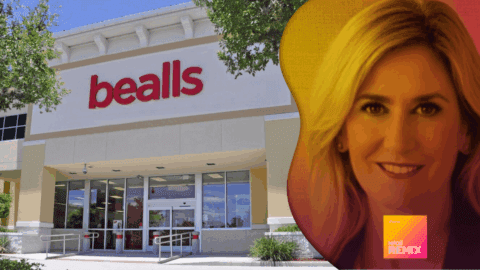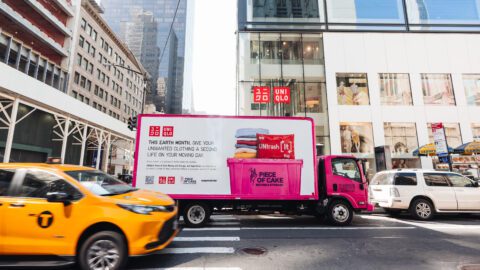Many of today’s marketers rely on loyalty programs to improve customer relationships and experiences. In fact, a majority of loyalty program marketers use this tool to manage customer retention and increase revenue, according to a survey conducted by Kobie Marketing.
During a recent Loyalty 360 webinar titled: “Omnichannel Loyalty: Maximizing Your Customers Experience,” industry professionals discussed survey results, trends impacting loyalty programs, and best practices in overcoming challenges from the social, mobile and local (SoMoLo) revolution.
In a Kobie Marketing white paper, titled: “Omnichannel Loyalty: Designing The Ultimate Customer Experience” ― which was based on survey results ― more than half (58%) of loyalty program marketers stated that customer retention drives their loyalty efforts. Approximately 48% of respondents pointed to revenue as a key consideration. “Not surprisingly, in a continually down or recovering economy, marketers focus on loyalty as a retention strategy,” said Emily Murphy, Customer Intelligence Analyst at Forrester Research. “This directly drives profitability and revenue, and improves engagement.”
Only 37% of survey respondents mentioned customer engagement as a top business objective, and only 30% referenced acquisitions.
“As the paradigm rapidly shifts in effective loyalty strategies, brands realize they have the ability to shape ‘behavior’ with potential brand advocates,” Mark Johnson, President and CEO of Loyalty 360, said in the webinar. “Yet the efficacy of a temporal loyalty strategy now is predicated on the ability to understand the comprehensive nature and multiple touch points of the consumer to evoke such engagement.”
Loyalty Programs Focus On Discounts
For both consumers and marketers, loyalty programs historically have revolved around discounts, noted Murphy. In fact, 51% of loyalty program marketers surveyed said they use discount-based rewards as a customer incentive, while 63% of consumers said they were interested in loyalty programs that offer instant discounts and savings.
Consumers like instant discounts, savings and points, said Murphy. “Compare that 63%,” she said, “to the 17% of consumers interested in programs with a charitable element.”
Consumers’ Impact On Loyalty Programs
The perception of loyalty programs has changed: In the Kobie survey, most (54%) consumers said loyalty programs have helped them save money, a 4% decline since 2008. “The number of consumers who feel loyalty programs don’t influence their purchases has increased 30% in three years,” Murphy said. “In addition, in 2011, 40% more consumers felt that most loyalty programs didn’t offer any real value at all. Loyalty programs are losing clout, and as more programs enter the marketplace, this is bound to get worse.”
Rather than spraying and praying the rewards, marketers need to understand their customers by offering targeted rewards that meet their needs, explained Murphy. “Many [loyalty] programs struggle to engage consumers and drive loyalty in the long-term.”
During her presentation, Murphy highlighted several key facts about loyalty programs:
- They help marketers collect vast amounts of qualitative and quantitative data;
- Few marketers effectively create and apply these customer insights;
- Marketers still live in a “push messaging world;” and
- Loyalty programs that fail to engage effectively miss out on the opportunity to establish a meaningful connection with their members.
The Kobie research also showed that consumers are limiting their participation in loyalty programs. In fact, approximately 60% of U.S. adults who shop online participate in only a few loyalty programs. “Competition already is tough [for marketers],” said Murphy. “As more programs enter the marketplace, each needs to do more to stand out.”
Marketers’ Five Top Challenges
Marketers are confronted with several challenges when deploying a loyalty program. Kobie Marketing survey respondents noted five main challenges, each highlighted in the webinar:
1) Differentiating the program from similar efforts in the marketplace (28%);
2) Understanding customer interactions across all touch points (27%);
3) Maintaining customer data quality (27%);
4) Delivering offers with a high perceived value (26%); and
5) Ensuring member awareness/understanding of the program and its benefits (25%).
The Impact Of Social And Mobile
Emerging channels such as social and mobile are key drivers for loyalty programs, according to the Kobie Marketing white paper. With more than 80% of U.S. online adults participating in social channels, marketers can use these vehicles to increase awareness of their organizations’ loyalty programs. For example, marketers can leverage social channels to start conversations with members or allow them to enroll in the programs.
“To take advantage of social, a loyalty program can incentivize social interactions,” said Murphy. “This could be as simple as awarding a small discount for a ‘like’ on Facebook, or giving points for social referrals and product recommendations. Or, the approach could be as complex as providing a single sign-on and direct integration with Twitter or Facebook.”
Mobile and location-based services (LBS), on the other hand, allow consumers to engage with the brand on their terms, noted Murphy. “For example, while mobile technologies increase the number of opportunities to engage members,” she stated, “location-based services can lead to non-transactional rewards, such as comparing member review ratings or discussing the brand in the social space.”












